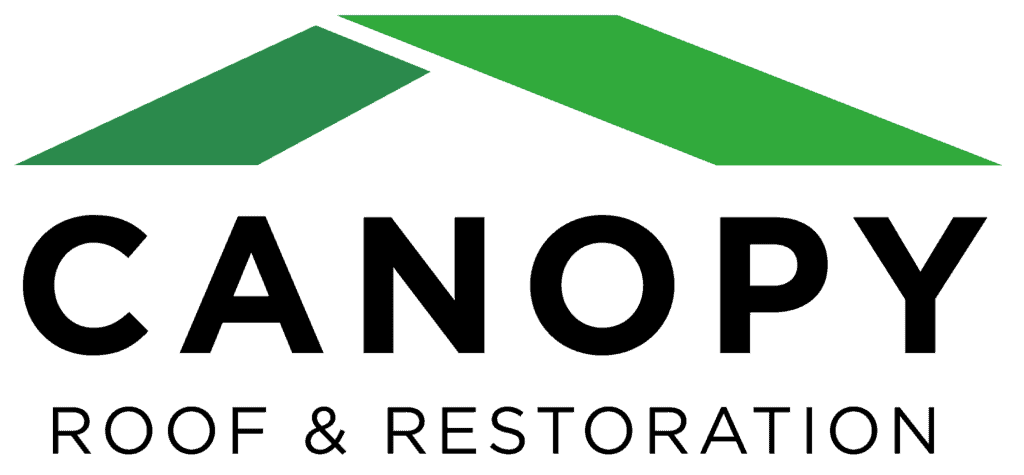In the event that your roof requires urgent replacement, the financial burden can seem overwhelming. Fortunately, homeowners insurance may cover the cost, especially when the damage is unexpected.
The process of handling insurance claims can often be overwhelming and challenging. Many individuals are unfamiliar with the terms and conditions outlined in their policy, which can cause uncertainty and potential financial burden.
Having a clear understanding of how to successfully navigate this process can lead to significant savings and reduce stress. This guide serves to clarify the steps involved in using insurance to finance a roof replacement, highlighting important factors and actions needed to maximize coverage under your policy.

Recognizing the Damage
The initial and essential action to take when filing an insurance claim for a roof replacement is identifying the damage. It is not simply about recognizing that the roof has been affected, but also determining the magnitude and source of the damage. These specifics are vital in your insurance claim process.
Begin by thoroughly examining your roof. Check for clear indicators of harm such as absent shingles, leaks, dents in metal roofing, cracks, or any other noticeable flaws.
It’s important not to dismiss the subtle indicators, like shingle granules gathering in gutters or downspouts. These could be signs of larger problems. To get a precise and thorough damage analysis, consider hiring a professional roofing contractor to inspect your roof.
It is crucial to identify the root cause of the damage, as insurance providers usually only cover damages caused by unforeseen circumstances such as storms or accidents. Should the damage be a result of normal wear and tear or insufficient upkeep, it is less probable for coverage to be provided. Be sure to document any recent weather occurrences or other notable events that could have potentially contributed to the damage.
Record the Damage
As you examine your roof, make sure to record all instances of damage. This step is critical in developing a thorough and concise record of the harm, which acts as vital evidence for your claim. Keep the following factors in mind to effectively document the damage:
Take High-Quality Pictures
Start by capturing thorough photographs of the damage, including detailed shots of specific affected areas and broader shots that exemplify the overall scope and placement of the roof’s damage.
Document with Video Footage
Aside from photos, it may also be worth capturing a video. Videos can offer a continuous and dynamic perspective of the damage that photos may not capture. Adding narration to the video, with explanations of what is being shown, can greatly assist in providing context for the insurance claim.
In-Depth Written Explanation
In addition to your visual documentation, provide a thorough written account of the damage. Specify the dimensions, nature, and placement of each affected area. Be sure to include any relevant dates and times, particularly if the damage happened during a documented weather event or accident.
Report from Roof Inspection Specialist
Having a qualified roofing contractor assess the damage and present an official report can greatly strengthen your claim. The report itself offers professional insight into the root and severity of the damage, ultimately holding weight in the claims procedure.
Report of Previous Repairs and Maintenance
Incorporate records of regular roof maintenance and repairs into your documentation to showcase a consistent history of proper care and refute any potential allegations of neglect as the cause of damage.
Submitting a Claim to the Insurer
Submitting a claim to your insurance provider is a crucial part of obtaining coverage for your roof replacement. Here are some tips for successfully navigating the process:
Read Over Your Insurance Policy
Before submitting a claim, make sure to thoroughly examine your homeowners insurance policy. Familiarize yourself with its coverage for roof damage and the required steps or timeframes for filing a claim. This knowledge will assist you in presenting your case confidently and preparing for any possible obstacles.
Get in Touch With Your Insurance Agent
Contact either your insurance agent or the company’s claims department promptly following the damage. Provide details of the situation and request specific instructions for handling the claim.
Submit Documentation to the Insurance Company
Be sure to collect all necessary documentation, such as photographs, videos, a detailed written description of the damage, and any professional inspection reports. The more thorough and specific your evidence, the stronger your claim will be.
Fill Out the Claim Forms
Complete the claim forms from your insurance provider with great attention to detail. Ensure that your responses are precise and truthful. Any discrepancies between your forms and supporting documents may cause inquiries and could potentially result in a delay in the process.
Schedule an Appointment with an Insurance Adjuster
To prepare for the insurance company’s adjuster visit, ensure you have all necessary documentation and repair estimates on hand.
Check In Regularly
After filing your claim, it is important to maintain regular communication with your insurance provider. Stay updated on the progress of your claim and be readily available to answer any further questions or provide any additional information needed.
Ensure That You Fully Understand the Settlement Offer
Upon receiving a settlement offer from your insurance company, it is important to thoroughly review it. Be certain that the offer takes into account all necessary expenses for a satisfactory roof replacement. If you feel the amount is inadequate, do not hesitate to engage in negotiations or request further explanation of how it was calculated.
What to Do if the Claim is Denied by the Insurance Company
Having your insurance company deny your claim for a roof replacement can be quite disheartening. But don’t lose hope just yet – there are ways to challenge their decision and possibly overturn it. Consider the following steps as potential options in this situation:
Determine Why the Claim was Denied
To begin, it is important to determine the cause of your denied claim. Insurance providers are obligated to supply a written justification for the denial. This explanation ought to outline the specific factors leading to the rejection, such as lack of coverage for the type of damage or inadequate evidence.
Figure Out if Your Policy Should Cover the Damage
After determining the cause of denial, take the time to carefully examine your insurance policy. Familiarize yourself with its terms and conditions and pay special attention to any clauses or coverage that may contradict the reason for denial. Keep in mind that denials can sometimes stem from a lack of understanding or incorrect interpretation of policy terms.
Collect Evidence
If the reason for the rejection is a lack of proof of harm or its source, it may be beneficial to obtain more thorough records. This could include seeking a secondary evaluation from an alternate roofing expert or an unbiased assessor who can provide a comprehensive analysis.
Submit an Appeal
Submit a formal appeal by following your insurer’s guidelines. Include all pertinent documentation, professional assessments, and any other evidence that bolsters your case in the appeal. Clearly state why you disagree with the denial decision and why you believe your claim deserves a second look.
Get Help from a Professional
Enlisting the services of a seasoned insurance claims lawyer can provide you with crucial insight and aid you in disputing issues like misleading terminology in your policy. Likewise, a public insurance adjuster is equipped to act as your advocate during interactions with your insurer, offering their expertise and negotiating prowess.
Reach Out to Your State Insurance Department
If your claim denial remains unresolved after appealing to the insurance company, you can reach out to your state’s insurance department. These departments are responsible for regulating insurance companies according to state laws and can help clarify your rights and the insurer’s obligations. Some states also offer a mediation service that can assist in finding a resolution that works for both you and the insurer.
Explore Other Options for Financing
In the event that your initial appeal is not successful or you opt out of appealing, consider other avenues for financing your roof replacement. These could include pursuing financing options offered by roofing companies, securing a personal loan, or taking out a home equity loan.

What Happens if the Claim is Accepted by Your Insurance Company
Claim acceptance marks the start of a resolution journey that leads to both financial relief and a plan for repairs. Here’s what generally occurs afterwards:
Notification of Claim Approval
A formal notification from your insurance company will confirm the acceptance of your claim. It should provide you with a breakdown of coverage, including the extent of repairs or replacement that will be covered, and any applicable deductibles.
Payment Procedure
Certain insurers may provide a one-time payment that covers the entire repair expense, after subtracting your deductible. Alternatively, they might choose to split the payment into two parts – an initial amount to begin the repairs and a final sum upon completion. It is important to clarify their payment timeline and ensure it coincides with how your contractor bills for their services.
Choosing a Roofing Contractor
Once you have secured funding, your next task is to carefully select a reliable roofing specialist. It is essential to hire someone who is licensed, insured, and has ample experience in the field in order to guarantee satisfactory results. Although your insurance provider may offer a list of suggested contractors, ultimately it is up to you to make the final decision.
Supervise the Replacement Procedure
Once a contractor is chosen, they will collaborate with you to arrange and finalize the replacement. Stay in frequent communication with both the contractor and your insurance provider during this procedure to ensure that all work is done to your satisfaction and within the prearranged parameters.
Final Check-up and Completion
Once the repairs have been finished, a final inspection may be requested by either your insurance provider or the local building authorities to confirm that all criteria have been met. Once this has been successfully completed, the contractor will furnish you with a comprehensive invoice, which can then be presented to your insurance company for any final payment required.
Simplify the Process of Using Insurance to Fund a Roof Replacement
Although the idea of using insurance to fund a roof replacement may seem complex, it is manageable. All that is required is a thorough comprehension of the steps involved, including documenting the damage, familiarizing yourself with your policy, and effectively communicating with your insurance provider.
By teaming up with a trustworthy roofing company such as Canopy Roof & Restoration, you can benefit greatly from their support throughout the entire process. Not only do we ensure top-notch roof installation, but we also assist clients with navigating insurance claims to secure the most favorable outcome. Get in touch with us now to streamline your roof replacement journey and maximize your investment.





